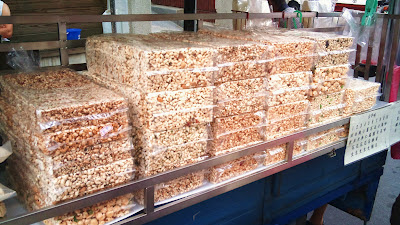Last summer, I took a train, CRH (China Railway High-speed) "Hexie Hao 和谐号" from Shenzhen to Guangzhou.
High speed train from Shenzhen to Guangzhou takes only about an hour
It was easier than I thought. Just go straight to the ticket counter at the train station and tell them the destination and time of the train. It is easy to get a ticket because there are many trains between Shenzhen and Guangzhou.
It will be a different story, if you want to go further away... Buying a train ticket in China can be difficult. Ordinary Chinese people come to city, working away from home. Most of them can not afford airplane tickets to go home. So, think about the population of China, train systems are still not enough for their demand.
China Hotel, A Marriott Hotel
I stayed in China Hotel, A Marriott Hotel. The hotel opened in 1984 (28years old!!), located only a mile away from Guangzhou railway station and a minute away from subway Yuexiu Park (越秀公园) station. It's an old hotel but good location.
Guest room, big enough, clean not much of view though...
It is old fashioned but I found it quite cozy.
Little Chinese taste,
Tissue box and amenity box in a bathroom (left), Tea and coffee set (right)
Temple of the Six Banyan Tree ("六榕寺"Liu Rong Si) originally built in 537. The main structure of the temple "Flower Pagoda" is the oldest building in Guangzhou.
As a matter of fact, China is a country with an ancient civilization and it has many historical monuments all over the country. Though, I was very happy to see some historical side of China because I could hardly trace back any history in Shenzhen.
Flower Pagoda in "Temple of the Six Banyan Tree"
"Temple of the Six Banyan Tree"
In past decade, Guangzhou has been expanding itself, specially before and after the Asian Games in 2010. The city center has been spread out to Eastern Guangzhou, such as Hianhe and Pazhou.
Shangri-la Hotel Guangzhou opened in March, 2007, next to Guangzhou International Trade Center. And opposite from Shangri-La, The Westin Pazhou has opened it's door in Sep.2011, direct access to the Guangzhou International Convention & Exhibition Centre. Both located in Pazhou. There are still nothing more than Trade Center but probably there are more to come within a few years...
The Westin Pazhou in left (left), Shangri-La Hotel Guangzhou (right)
Lobby Lounge, Shangr-La Hotel Guangzhou
Lobby Entrance, Shangri-La Hotel Guangzhou



























